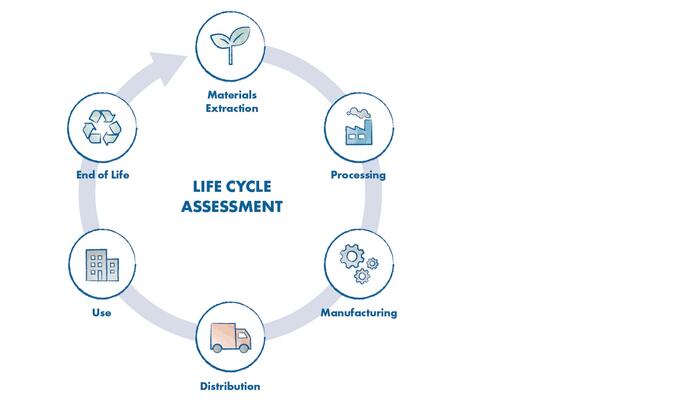The phrase “embodied carbon” is trending…and for a good (bad) reason. It’s the carbon dioxide (CO₂) emissions associated with the lifecycle of a building, from the extraction, manufacture, and transport of building materials, through to a building’s construction, maintenance, and demolition. Every building constructed or renovated contributes to greenhouse gases (GHGs) in our atmosphere, which adds to global warming – bad news for the Earth!
Why You Should Track Embodied Carbon.
The construction industry needs to get even more serious about reducing carbon emissions. Recent changes in policies for municipalities, and new targets for carbon reduction through initiatives like Architecture 2030 and the Paris Climate Agreement, are starting to bring a greater focus to not only the need to report embodied carbon (and other environmental impacts) in buildings, but also reduce their CO₂ emissions – much like how we’ve reduced energy consumption through energy codes. But to do this, you need to know your carbon footprint.

Measure ALL Of Your Building’s Footprint.
It may surprise you to know that building materials, and their associated emissions, can contribute anything from a third to nearly half of a building’s total carbon emissions over its life (when you consider both embodied and operational carbon). Globally, concrete and steel each represent around eight per cent of CO₂ emissions! That’s why it’s important to investigate the impact of these materials, as well as the building designs that use them, in the early stages of a project. How? Life cycle assessments (LCAs).
LCAs allow us to calculate embodied carbon emissions by analyzing the extraction, manufacturing, and transport of building materials. They give architects and owners the insight they need to make tangible changes – potentially reducing the amount of concrete and steel, as well as other materials, used – to cut emissions. LCAs also highlight other possible environmental impacts, such as acidification and ozone depletion, which is important when you are serious about meeting sustainable design goals. LCAs not only provide valuable information to architectural teams and their clients – they also assist owners of existing buildings. We’ve helped clients compare structural design changes, changes to roofing assemblies, and even evaluated the differences in exterior cladding and insulation. Any changes, whether they are small or on a larger scale, can make a difference to the embodied carbon your building contributes.
Make A Difference.
It’s not just about meeting design or policy requirements; it’s also about making a real contribution to the reduction of carbon emissions and slowing down global warming. The earlier a team can integrate an LCA into a project, the easier and more economical creating change can be. Let’s think about how our materials are made, where they come from, and what we can continue to improve on in our built environment.
Christina Michayluk leverages her knowledge on sustainable solutions to provide expertise on various certifications (such as LEED and Green Globes) and in-depth life cycle analysis. She is also Committee Chair of the CAGBC Alberta Chapter’s Emerging Green Professionals.











